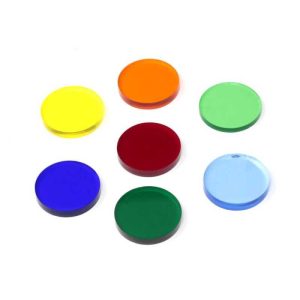Fluorescent filters are key components of life science instruments in fluorescence detection systems. We commonly refer to various filters in fluorescence system as fluorescent filters. This lens is composed of three different filters, mainly excitation filters, transmission (emission) filters, and dichroic filters. The excitation filter and emission filter are narrowband pass filters, with a relatively narrow spectrum, typically around 8nm-10nm. The main purpose is to obtain fluorescence energy or obtain fluorescence imaging. Fluorescent filters are characterized by good isolation of interfering light and minimal spontaneous fluorescence interference. Currently, fluorescent filters are widely used in various medical analysis and detection instruments such as PCR analyzers, fluorescence immunoassay analyzers, and fluorescence microscopes.

The function of the excitation filter:
In fluorescence detection systems, a filter with a wavelength that can excite fluorescence is now used as a bandpass filter in the fields of life sciences and biomedicine. Its main function is to separate and select the characteristic spectral bands of luminescence and emission of substances in biomedical fluorescence inspection and analysis systems.
The function of the emission filter:
The emission filter selects and transmits the fluorescence characteristics emitted by the sample, while other wavelengths of light are cut off. The wavelength of emitted light is longer than the wavelength of excited light. We can choose a bandpass filter or a long wavelength pass filter as the emission filter when choosing a fluorescent emission filter.
The function of a color filter:
Also known as a dichroic or dichroic filters, it is placed at a 45 ° angle in the optical path of the detection system. A dichroic filter reflects a type of excitation that emits light and transmits it. The reflectivity of the excitation is greater than 90%, and the transmittance of the emitted light is greater than 90%. The parts of the spectrum that cannot be transmitted are reflected rather than absorbed, and the colors of the filter under transmitted and reflected light complement each other, hence it is also known as a dichroic filter.
When determining the parameters of a filter, we usually look at the transmittance spectrum, but the intensity of fluorescence relative to excitation is often very weak. Therefore, when selecting a filter, we need to refer to the blocking depth spectrum, the oD value, and the ◎ D value more intuitively reflect the blocking characteristics of the filter to light. When selecting excitation filter and emission filter, the intersection point (D intersection point) of the blocking depth spectrum between the two is an important judgment standard. Generally, the intersection point ○ D value is required to be greater than 5 when excited by a wide field light source, and greater than OD6 when excited by a laser to achieve good fluorescence signal-to-noise ratio. The general principle for selecting fluorescent filters is to allow fluorescent emission light to pass through as much as possible at the imaging end, while blocking excitation light as much as possible, in order to obtain a high signal-to-noise ratio signal. It is generally recommended to have a certain distance between the transmission spectrum of the excitation filter and the emission filter, while Borisun Optics recommends choosing a bandwidth of 8nm-12nm.



